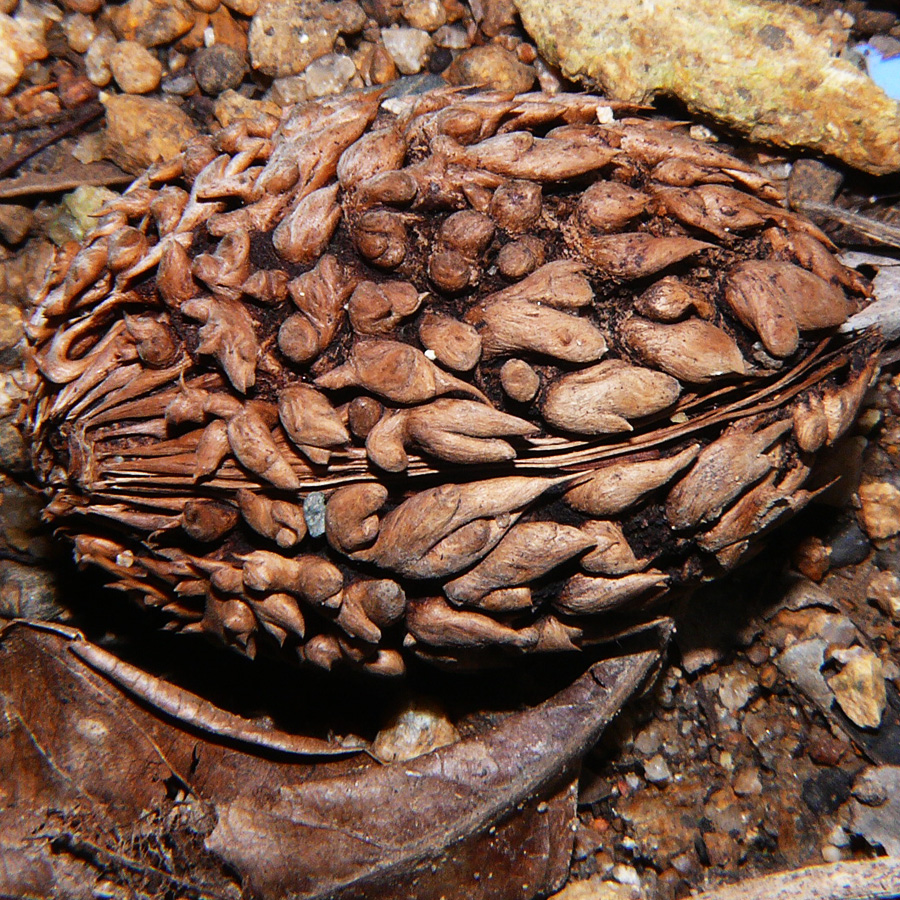Ornate-fruited Neisosperma
Neisosperma kilneri
Conservation Status
Queensland State: Vulnerable
Australian Government: Vulnerable
Download
All the information on this page is now available as a pdf download
Species and status overview
Ornate-fruited Neisosperma or Backpackers Brains prefers gullies with granitic boulders and flowing streams on low hills within vine forest and subtropical rainforest. It can be found in the Proserpine, Mackay and Mt. Dryander area and is only known from the Mackay/Whitsunday Region of Queensland.
This species has been recorded flowering in November-December and February to May and July. Fruiting can occur in January and May through to July.
The seeds form a food source of a mystery animal, with old seed casings found stashed under rock shelters and in hollow logs. Each one has the first seed removed from the tip and it is unlikely that the animal is able to chew any further into the casing to access the rest of it’s tasty treat as it is extremely hard. In fact the casing is so hard, it’s difficult to even saw through.
They been recorded in the following areas.
- Mt Dryander
- Headwaters of the Gregory River
- Dryander FR
- Pioneer Peaks NP
- Carmilla Creek
- Koumala
Description
Ornate-fruited Neisosperma is a tree that grows to 20m in height. The leaves are dark green on the upper surface and pale below growing approximately 14cm long and 7cm wide and are formed in whorls. The flowers are white and sweetly perfumed, approximately 7mm long and the same wide, similar to a Frangipani shape, but smaller. Also like the Frangipani, the sap is milky when the stems are broken. It bears distinctive chicken-egg sized, red fruit in pairs that has a beautifully patterned seed casing (endocarp) inside. The fruit start off dark green and become red once ripe and turn black when the fruit fall off the tree.
The highly ornate endocarp that gives rise to this species common name, is truly beautiful and appears to have been intricately hand carved.
Conservation concerns
Threats
- Vegetation clearing
- Invasion by exotic weeds such as Lantana camara
- Inappropriate plant collection
- Inappropriate fire regimes in some areas.
What can I do?
- Raise awareness of N. kilneri within the community and highlight the threat from inappropriate collecting.
- Maintain liaison with private landholders and land managers of land on which populations occur, highlighting the threats.
- Apply appropriate fire in fire adapted plant communities adjacent to areas containing N. kilneri to reduce the impact of high intensity fires that may damage their rainforest habitat.
Photo Credit Steve and Alison Pearson
